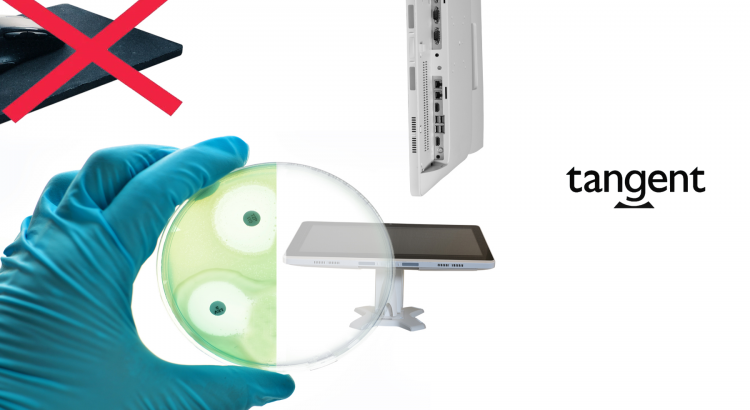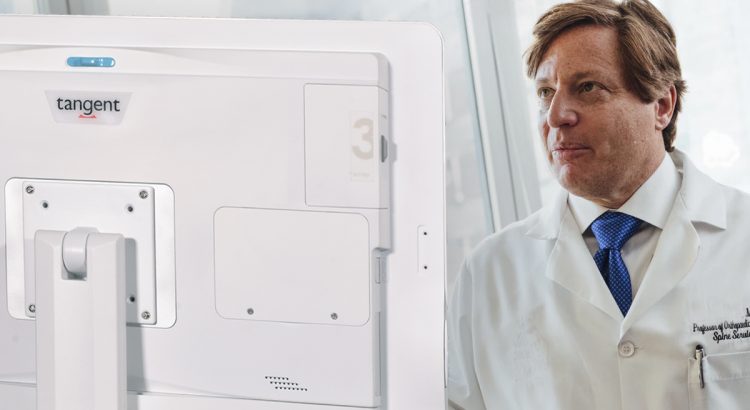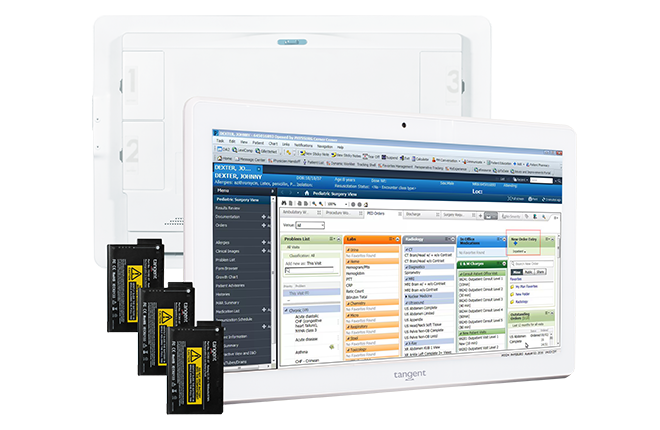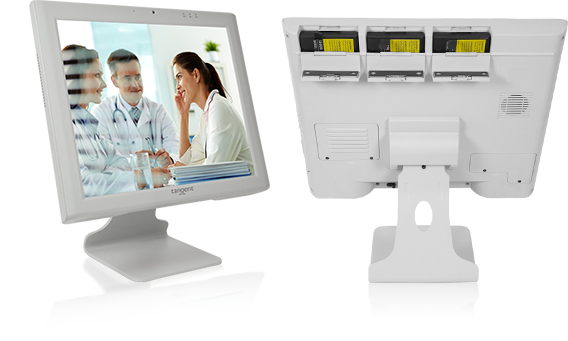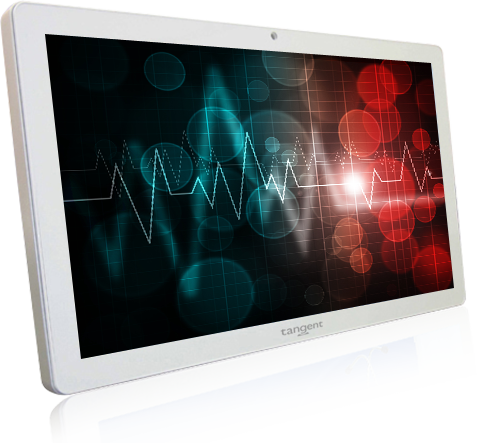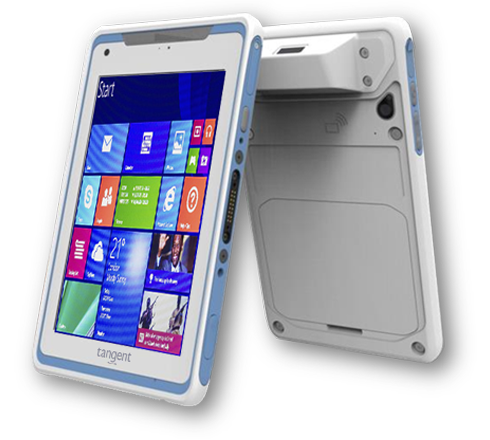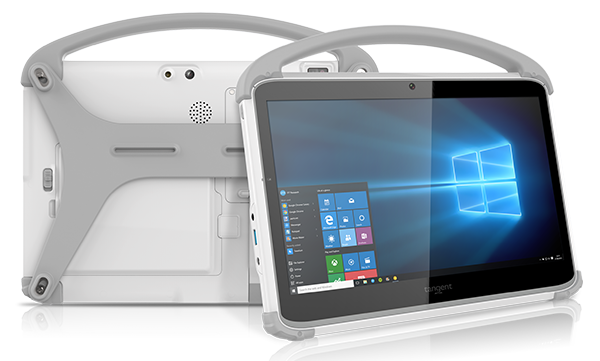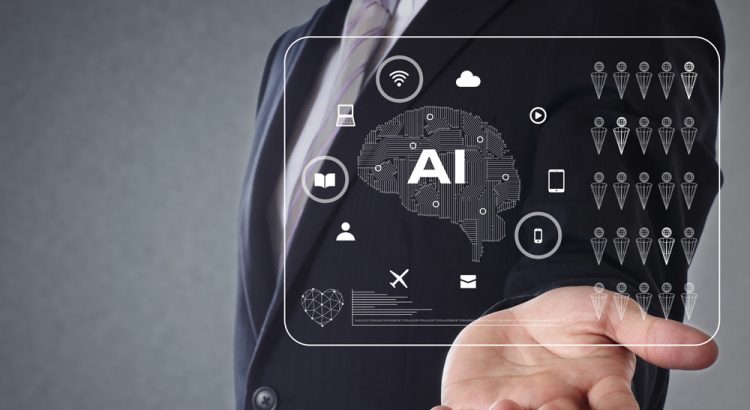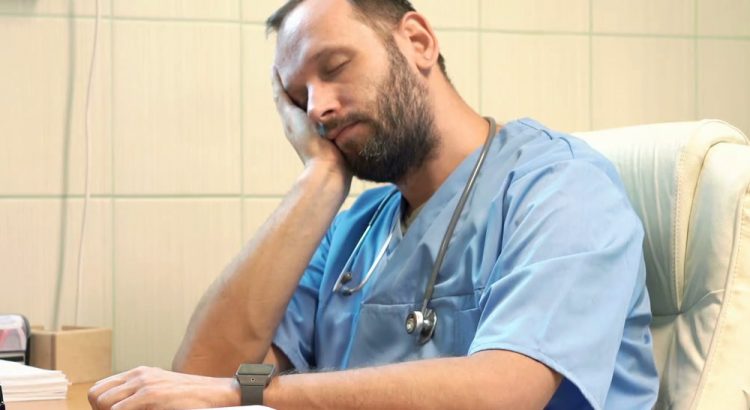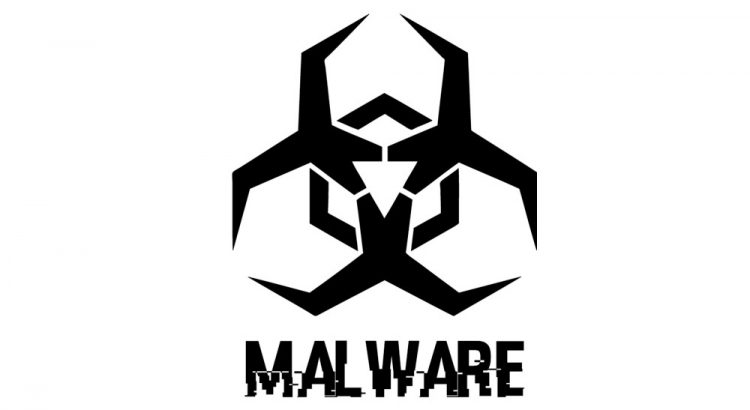When we discuss the prevention of nosocomial infections in the hospital—clostridium difficile (C. diff), Methicillin-resistant Staphylococcus aureu (MRSA), Escherichia coli (E. Coli)— it is important to note all the various ways these diseases are transmitted. From one medical exam room to the next, medical staff carry such diseases across the hospital. It’s already well known that medical staff need to clean the mice and keyboards of their medical computers regularly in order to kill these diseases, however this may not be enough.
In addition to these diseases resisting most traditional cleaning agents, a recent preprint of a Shanghai Jiao Tong University School of Medicine paper suggests even the mousepads of medical computers harbor these dangerous bacteria. This calls into question the efficacy of traditional medical computers in general, with every peripheral potentially enabling life threatening diseases. All-in-one medical computers offer a promising solution, eliminating the need for disease carrying peripherals while operating above the level of traditional medical computers.
All-In-One Medical Computers: No Dirty Accessories
All-in-one medical computers differ from traditional medical computers in a number of ways, but most notably in their ability to operate without a mouse, keyboard, or mousepad; everything one needs to operate an all-in-one medical computer is localized in the actual medical computer.
All-in-one medical computers feature antimicrobial touchscreens, allowing medical staff to fully utilize their medical computer without the use of a keyboard or mouse. Without these accessories, all-in-one medical computers negate the rampant growth of harmful bacteria and require less cleaning. In addition, all-in-one medical computers come with a durable antimicrobial coat to counter the potential spread of such bacteria. This coating mitigates the growth of bacteria that is transferred to the all-in-one medical computer instead of simply letting the bacteria fester and grow. With an antimicrobial coating, all-in-one medical computers are far more cleaner than their traditional counterparts while also being easier to use.
Easier Than Ever
All-in-one medical computers are not only safer than traditional medical computers, they are also easier to use. It may seem counterintuitive that a medical computer without a mouse, keyboard, or mousepad would be easier to interact with but in reality using all-in-one medical computers is a lot like using your own personal phone. Tasks such as scrolling, clicking, and locating information on digital medical charts becomes far less tenuous and nearly second nature. All-in-one medical computers are as easy to use as they are safe, and allow your medical staff to focus solely on their patient’s well being instead of whether their interactions are causing said patient to become more ill.
All-In-One Medical Computers: Safe And Easy
With new information coming out every month showcasing how common hospital items can actually harbor dangerous bacteria, staying up to date is more important than ever to mitigate nosocomial infections. All-in-one medical computers offer a compelling solution to the problem of computer accessories harboring such bacteria, eliminating bacteria growth and making the job of medical staff far easier.
